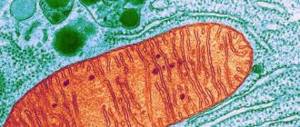One of the most common kidney pathologies is inflammation. In medicine, this disease is called pyelonephritis. The disease can occur in both acute and chronic forms. Moreover, the first is considered more favorable in terms of prognosis, since it is in the acute stage that the pathology is more quickly identified and treatable. The chronic course of the disease without visible symptoms more often leads to renal failure. If the reader wants to learn more about what pyelonephritis is and how the disease is transmitted, then the information below will be interesting.
Important: both men and women can get pyelonephritis. But among the fair sex, the percentage of patients is higher due to the anatomical features of the structure of the genitourinary system. That is, it is in women that the utera is shorter than that of men, which contributes to faster penetration of the infection into the urinary tract and further into the kidneys.
Patients at risk
Pyelonephritis does not affect everyone; certain categories of people are at risk.
Pyelonephritis does not affect everyone. Certain categories of people are at risk. Thus, the following are especially susceptible to the development of renal inflammatory pathology:
- Young women aged 18-30 years. Here we are talking about the development of the disease through infection through sexual contact. That is, it is not pyelonephritis itself that is transmitted, but bacteria and infectious diseases. Further, when harmful viruses and bacteria penetrate the urinary tract, they become fixed in the kidneys, and an inflammatory process called pyelonephritis begins.
- Individuals who are sexually promiscuous. Here the mechanism of acquiring pyelonephritis is the same.
- Pregnant women. The fact is that the growing fetus puts pressure on the kidneys and interferes with the normal outflow of urine. As a result, the kidneys reduce their performance. And with accidental hypothermia or decreased immunity, pyelonephritis may develop.
- Persons who have previously suffered any pathologies affecting the kidneys and genitourinary system.
- Elderly people over 50 years of age.
Reasons for the development of pyelonephritis
Pyelonephritis is a secondary disease, that is, it develops against the background of decreased immunity.
Pyelonephritis itself does not pass from one person to another. Neither by airborne droplets, nor through tactile contact, nor through sexual intercourse. The process of pathology formation completely depends on the internal resources of the body. After all, pyelonephritis is a secondary disease. That is, it develops against the background of decreased immunity caused by such factors:
- Sudden hypothermia in an aquatic environment;
- Chronic cystitis;
- Stagnation of urine in the renal pelvis and urinary tract;
- Diabetes mellitus in the compensated stage;
- Any chronic inflammatory processes in the body;
- Streptococcal infection (tonsillitis, tonsillitis, etc.);
- Impacts and kidney injuries;
- HIV infection;
- Frequent use of a catheter or the need for its constant presence in the urinary system;
- Hormonal disorders;
- Presence of stones in the kidneys;
- Carrying out radiation or chemotherapy.
At the same time, the main provocateurs of the development of pyelonephritis against the background of all the above conditions are infections or bacteria that enter the human body either through the genitourinary system or through the blood. These are:
- Escherichia coli;
- Urogenital infections (ureplasma, trichomoniasis, etc.);
- Staphylococcus aureus;
- Klebsiella or Proteus bacteria;
- Candida fungus (for thrush in women);
- Chlamydia, mycoplasma and salmenella;
- Prostatitis and adnexitis.
Important: to identify the nature of pyelonephritis and prescribe subsequent effective treatment in people who suffer from pyelonephritis, blood is taken for analysis to determine the type of bacteria that caused the development of the disease.
In addition, the provoking factors for the development of kidney inflammation is the social inability to empty the bladder on time. For example, if a person does not find a toilet nearby or works under the command of a tyrant who considers absences to go to the toilet as an obstacle to work, then the employee is forced to endure for a long time. This condition leads to overfilling of the renal pelvis and the development of reflux - the backflow of urine from the bladder into the ureters and kidneys.
Symptoms of drug-induced kidney damage and treatment
Possible routes of infection
Experts assure that pyelonephritis is not contagious, that is, infection through sexual or household contact is impossible. However, everyone who lives with the sick person has a chance of becoming infected with the same E. coli from the same source. Meanwhile, we should not forget about concomitant infections that caused the pathology. If it is difficult to become infected with pyelonephritis directly from your partner, then there is every chance of contracting chlamydia after unprotected sexual intercourse.
Inflammation of the kidneys occurs against the background of infection of tissues by various pathogenic microorganisms. Among them there are also pathogens of sexually transmitted diseases. Often chlamydia or ureaplasmosis are asymptomatic and are discovered by chance during examination. Obviously, the answer to the question of whether it is possible to become infected through sexual intercourse will be negative when it comes to E. coli. But in the event of pathological processes occurring against the background of ureaplasmosis or chlamydia, the risk of getting an infection is very high.
Ureplasma as one of the common causes of pyelonephritis
One of the common causes of the development of pyelonephritis is ureplasma.
One of the common causes of the development of pyelonephritis is ureplasma. The disease can live in the human body for a long time without visible symptoms. Moreover, the infection is resistant to any antibiotics. But its most basic nuance is the ability to hydrolyze urea, which leads to an inflammatory process in the kidneys.
Here it is worth knowing that ureplasma is transmitted exclusively through sexual contact or appears when basic rules of intimate hygiene are not observed. If ureplasma remains undetected for a long time and, worse, untreated, then over time the urinary ducts and then the kidneys will be affected.
Important: in the worst case, ureplasma can lead to sepsis.
Is it possible to have sex
Regarding sex with pyelonephritis, everything is not as clear as it might seem at first glance. All recommendations regarding having sex with pyelonephritis will depend directly on the form of the disease, on treatment tactics, and on the type of pathogen.
Is it possible to have sex during an exacerbation of the disease: during this period it is recommended to abstain from sexual intercourse. Since the concentration of pathogenic bacteria in the partner’s body is high, they can be transmitted to a second, healthy partner through sexual contact. In this case, sexual contact can provoke accelerated development of the disease, as well as a number of complications. In this case, a healthy partner has a high probability of getting pyelonephritis after sex.
Sex with pyelonephritis in the chronic form of the disease does not have strict contraindications. It is important to wait for remission. With pyelonephritis, you can have sex provided there are no acute inflammatory processes. This disease is not transmitted sexually to a partner provided that contraception is used and if the causative agent is not sexually transmitted infections. In any case, both partners should monitor their health by regularly visiting a urologist/gynecologist.
It is worth noting: the risk of infection in the male urethral canal during sexual intercourse is much lower than among representatives of the fair half of the population. Consequently, unprotected sex is much more dangerous for women than for men.
Is it possible to have sex after pyelonephritis? It is possible if both partners have undergone comprehensive treatment.
Development and course of pathology
Bacteria enter the kidneys along with blood contaminated with urine, or penetrate the urinary system through the walls of the urinary tract.
It develops in the human body under the influence of bacteria. Those, in turn, enter the kidneys along with blood contaminated with urine, or penetrate the urinary system along the walls of the urinary tract. It is worth knowing that an infection enters the kidneys along with the blood if there is already some kind of inflammatory infection in the human body. As a rule, this can be pneumonia, bronchitis, carious teeth, mastitis, purulent wounds, etc. Also, the disease can penetrate the kidneys along with urine when it is backfilled. In this case, E. coli can attach to the walls of the bladder and, together with the urine, end up “as intended.” In any case, when an infectious bacterium enters the kidneys, the acute phase of pyelonephritis begins, expressed by an increase in temperature to 39-40 degrees, nagging pain in the lower back and painful urination. There may be blood in the urine.
Causes of prolapsed kidney: symptoms and treatment
Here it is worth knowing that all microbes that have penetrated the kidney tissue can severely disrupt the functioning of the ureters. In this case, their spasm occurs, which leads to a decrease in diuresis (a decrease in the volume of urine per day). As a result, urine stagnates in the kidneys, which further destroys them.
Also, if the patient received a strong blunt blow to the kidney area, the organs may spasm, which again leads to a delay in the outflow of urine. This is another predisposition to the development of pyelonephritis.
Pathways to kidney damage
Many experts argue that pyelonephritis itself is not a contagious disease, in other words, it is impossible to transmit pyelonephritis through domestic or sexual contact. How then is pyelonephritis transmitted? The occurrence of the disease can be triggered by E. coli, transmitted from person to person, or another pathogenic bacterium. Yes, infectious infection of others with pyelonephritis is a complex process, but “rewarding” a partner with a sexually transmitted disease (chlamydia) is quite possible.
Pathogens also enter the kidneys through the blood: during trauma to the skin, surgical interventions, at the dentist, cosmetologist, in other words, in any place where direct contact with blood is made. It is for this reason that it is necessary to choose salons or clinics that use sterile devices and disposable supplies. The rate of development of kidney disease directly depends on the state of the immune system and on the method of entry of the pathogenic bacterium into the body.
Possible complications of pyelonephritis
If the disease is not treated, then over time it will go into the chronic stage.
If the disease is not treated, then over time it will go into the chronic stage. This is fraught with the following consequences:
- Acute renal failure;
- Abscess;
- Scarring of the kidneys;
- Hydronephrosis, which threatens kidney rupture;
- Sepsis and subsequent death.
Important: the sooner the patient contacts the clinic for treatment, the more successful the therapy will be and the fewer the consequences for the body. Ignoring pyelonephritis can lead to disability.
Symptoms of occurrence
Symptoms differ in the acute and chronic phases. In the first case, the disease develops rapidly and is accompanied by the following symptoms:
- high body temperature, fever;
- severe intoxication;
- general malaise;
- headache;
- heavy sweating;
- nausea and vomiting;
- pain in the lumbar region, which thaws into the back and genitals.
In chronic pyelonephritis, periods of exacerbation and subsidence of symptoms alternate. The attacks recur periodically and subside. This is where the insidiousness lies, since the patient at this stage may be diagnosed with renal failure or other types of complications.
Preventive measures against pyelonephritis
If the patient exhibits the slightest alarming symptoms, contact the clinic for medical help
. To avoid the development of such renal pathology, it is necessary to adhere to a number of these recommendations:
- Treat in a timely manner any chronic and inflammatory processes occurring in the body.
- Follow the treatment tactics completely, without interrupting therapy halfway if there is visible relief of the disease. Interrupted antibacterial therapy is not sufficiently effective, and the bacteria against which it was administered develop resistance to this type of drug.
- Follow the rules of intimate hygiene.
- Avoid casual sex, and if this happens, be sure to use a condom.
- After sexual intercourse, it is advisable to go to the toilet a little at a time, so that the bacteria that may have entered the urinary tract are washed away along with the urine.
- Dress and put on shoes appropriate for the weather, avoid hypothermia (including sitting in the cold).
- If the sick person exhibits the slightest alarming symptoms, contact the clinic for medical help.
Remember, your health is only in your hands.









